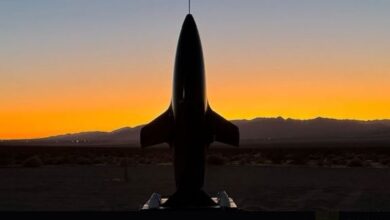The US Army’s Enduring Shield air defense system launched an experimental AIM-9X missile interceptor during a recent flight demonstration.
According to manufacturer Leidos, the system utilized a simulated Integrated Battle Command System (IBCS) interface to carry out the launch. The IBCS will serve as the new capability’s command-and-control system.
The live-fire test reportedly validated the functions of the weapon system, including sending a missile interceptor to a designated target location.
“This is a major milestone for our team to cross,” company operations manager Larry Barisciano said. “Being able to say these prototypes are ready for government testing by succeeding at this demonstration is a huge win for us as well as our warfighters.”
12 Launchers
With the flight demonstration complete, the US Army is expected to receive 12 launchers for the development test program, which will commence in January 2024.
An operational assessment is also planned for next year, with data from the recent demonstration and the 2024 testing to further mature the system.
“We’re ready to move to the next phase with more confidence and excitement for our future work with our US Army customer,” Barisciano added.
Closing Capability Gaps
Enduring Shield is a ground-based air defense system to combat cruise missiles and unmanned aerial systems.
It is designed to defend critical civilian and military infrastructure by providing 360-degree coverage.
It is also capable of engaging multiple targets simultaneously.
According to Leidos, the weapon system aims to bridge the gap between the service’s tactical short-range air defense systems and the Terminal High Altitude Area Defense anti-ballistic missile defense system.
Enduring Shield will serve as the US Army’s Indirect Fire Protection Capability.
Not Smooth Sailing
In September 2021, Leidos received a $247-million contract to build 16 Enduring Shield prototype launchers for the US Army.
However, the company announced that there had been a one-year delay due to supply chain issues.
The service was supposed to receive the launchers in 2022, but a prototype still needs to be delivered.
The delay is also expected to affect the system’s fielding date.












